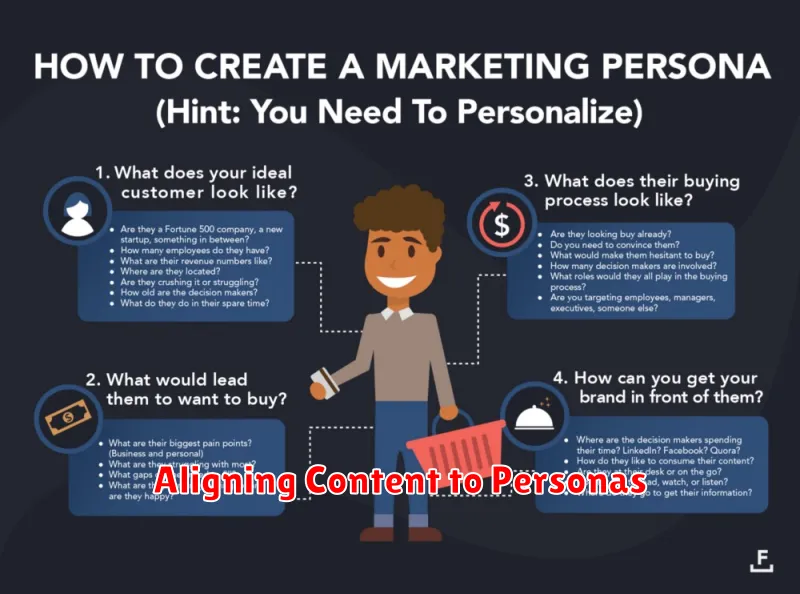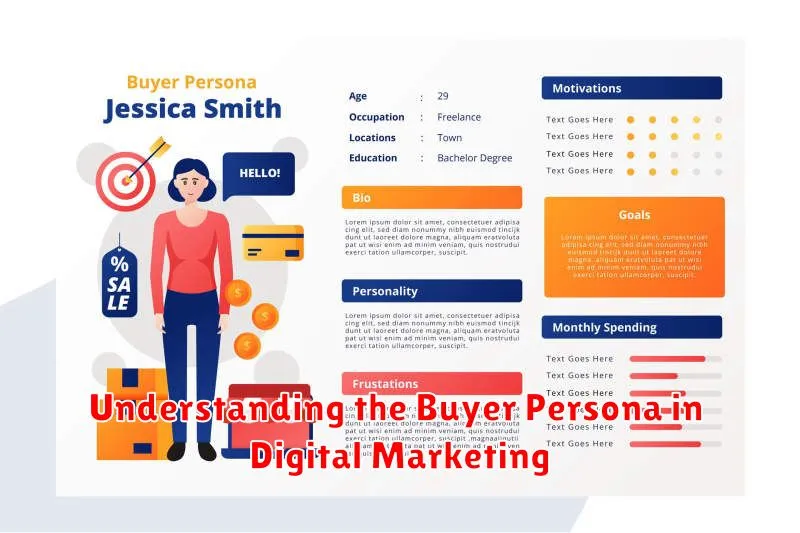In the dynamic landscape of digital marketing, understanding your target audience is paramount. A crucial tool for achieving this understanding is the development of a buyer persona. A buyer persona is a semi-fictional representation of your ideal customer, based on research and data about your existing and potential customers. This in-depth profile goes beyond basic demographics and delves into the buyer’s motivations, behaviors, and pain points. Creating a well-defined buyer persona is essential for crafting effective digital marketing strategies, enabling you to tailor your content, messaging, and channel selection to resonate with your target audience. By truly understanding your buyer persona, you can optimize your digital marketing efforts and achieve a higher return on investment.
This article explores the importance of the buyer persona in digital marketing. We will examine the key elements that comprise a comprehensive buyer persona, including demographics, psychographics, online behavior, and buying patterns. Understanding these components will empower you to create targeted digital marketing campaigns that effectively reach and engage your ideal customers. From content creation and social media engagement to search engine optimization (SEO) and paid advertising, a well-defined buyer persona serves as a guiding force, ensuring that your digital marketing efforts are aligned with the needs and preferences of your target audience. Learn how to create and leverage buyer personas to maximize the effectiveness of your digital marketing strategy and drive business growth.
Why Buyer Personas Matter
In the complex landscape of digital marketing, understanding your audience is paramount. Buyer personas provide a crucial framework for achieving this understanding. They move beyond simple demographics and delve into the motivations, pain points, and behaviors of your ideal customers.
Effective marketing strategies are built on a deep understanding of the target audience. Buyer personas enable marketers to tailor their messaging, content, and channel selection to resonate with the specific needs and preferences of their potential buyers. This targeted approach leads to increased engagement, higher conversion rates, and improved return on investment (ROI).
Without buyer personas, marketing efforts can become generic and ineffective, failing to capture the attention of the intended audience. By investing time in developing well-defined personas, businesses can focus their resources and achieve greater success in their digital marketing endeavors.
Collecting Customer Insights
Collecting customer insights is crucial for developing accurate buyer personas. This involves gathering both qualitative and quantitative data from various sources to understand customer behaviors, needs, and motivations.
Qualitative data provides rich, in-depth information about the “why” behind customer actions. Methods for collecting qualitative data include:
- Customer interviews
- Focus groups
- Surveys with open-ended questions
- Social media listening
Quantitative data offers measurable information about customer demographics, preferences, and online behavior. This data often comes from:
- Website analytics
- CRM data
- Marketing automation platforms
- Surveys with closed-ended questions
Analyzing both types of data helps create a holistic view of the target audience, enabling marketers to build effective buyer personas that drive successful digital marketing strategies.
Building Detailed Personas

Building detailed personas is crucial for effective digital marketing. It moves beyond basic demographics and delves into the specifics of your ideal customer’s behaviors, motivations, and pain points.
Begin by gathering data. Leverage existing customer data, conduct surveys, and perform interviews. Look for patterns and commonalities.
Key information to collect includes:
- Demographics: Age, location, occupation, income, education.
- Psychographics: Values, interests, lifestyle, personality.
- Professional Background: Job title, company size, industry.
- Goals and Challenges: What are they trying to achieve? What obstacles do they face?
- Online Behavior: Preferred social media platforms, research habits, content consumption.
Once you’ve collected sufficient data, craft detailed persona profiles. Give each persona a name and a narrative to bring them to life.
Aligning Content to Personas

Once you have developed detailed buyer personas, the next crucial step is aligning your content to their specific needs and preferences. This ensures your message resonates effectively and drives engagement.
Content alignment involves tailoring your messaging, tone, and content format to match each persona’s characteristics. For example, a persona representing a senior executive might prefer concise, data-driven content delivered through white papers or webinars. In contrast, a junior-level employee might respond better to visually engaging content like infographics or short videos.
Consider the following when aligning content:
- Information Needs: What information are they seeking at each stage of the buyer’s journey?
- Content Format Preferences: Do they prefer blog posts, videos, case studies, or other formats?
- Communication Channels: Where do they spend their time online? (e.g., LinkedIn, Twitter, specific industry forums)
- Pain Points and Challenges: How can your content address their specific challenges and offer solutions?
By carefully tailoring your content to each persona, you increase the likelihood of capturing their attention, building trust, and ultimately, driving conversions.
Updating Personas Over Time
Your buyer personas are not static. As your business evolves and the market shifts, so too should your understanding of your ideal customer. Regularly updating your personas ensures your marketing efforts remain relevant and effective.
Consider refreshing your personas at least bi-annually, or more frequently if you experience significant changes in your market, product offerings, or target audience. Triggers for updates might include new competitor activity, significant market trends, or evolving customer feedback.
The process for updating personas often mirrors the initial creation process. It involves gathering fresh data through customer surveys, interviews, and analyzing website analytics. Look for shifts in demographics, needs, pain points, and preferred communication channels.

